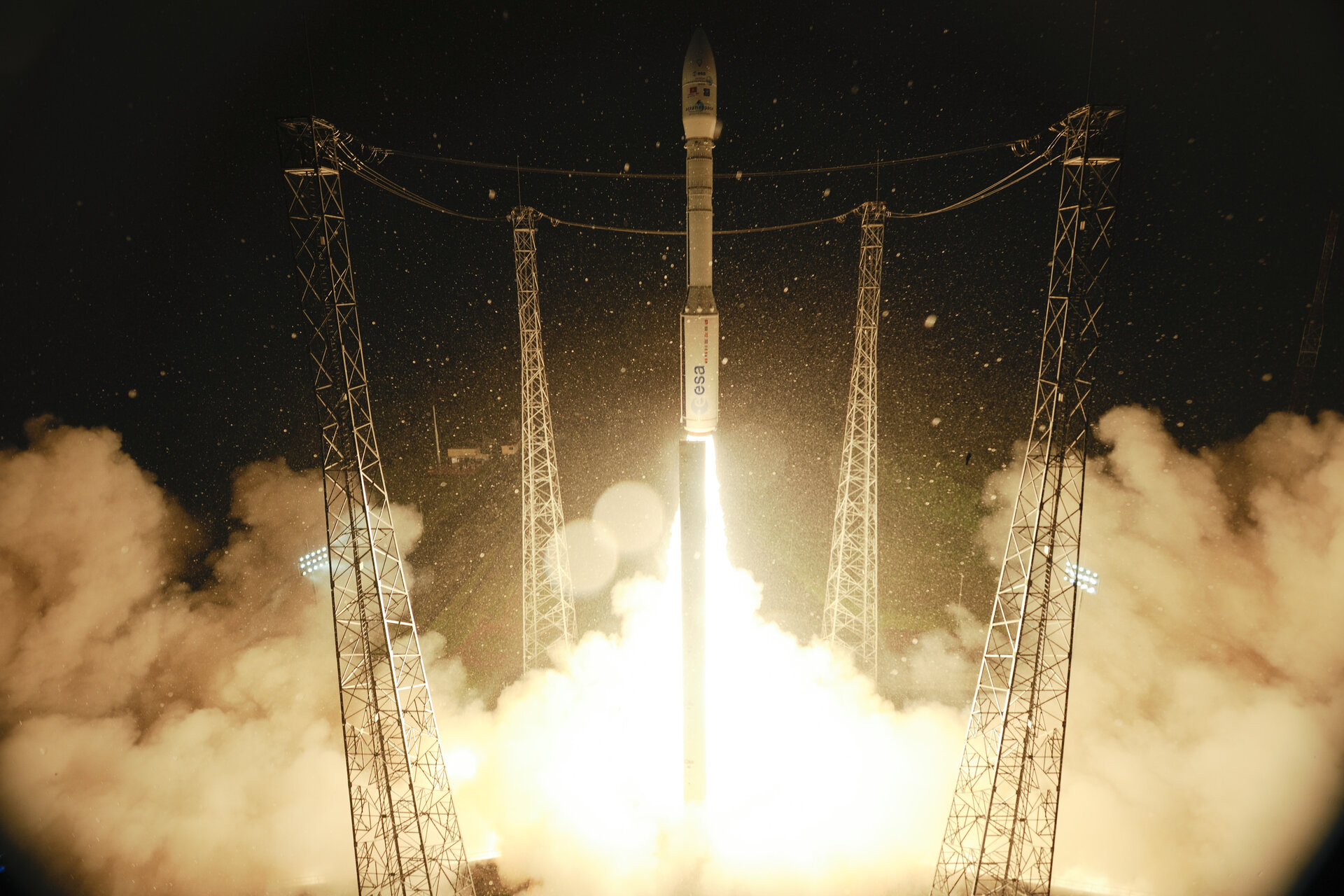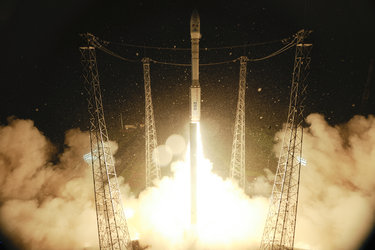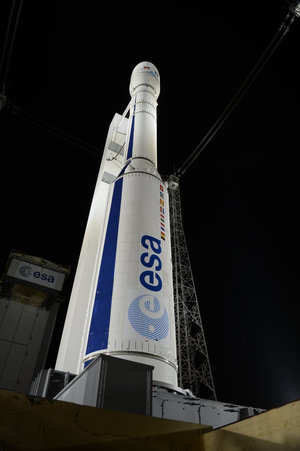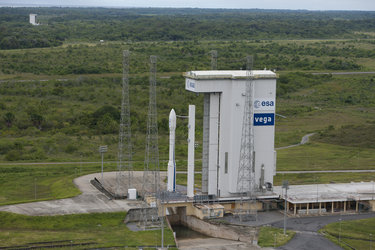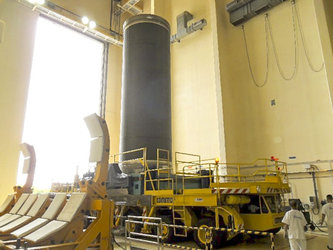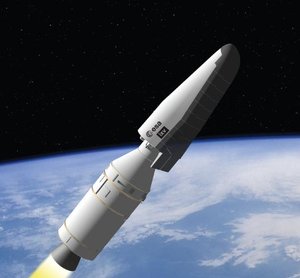VV02 – Vega uses Vespa
The second Vega launch took place on 7 May 2013 from French Guiana. It marked the transition into commercial exploitation while still completing its qualification.
The extended capabilities of Vega beyond the mission that was performed in the VV01 qualification flight were made possible in part by the addition of Vespa (VEga Secondary Payload Adapter). Vespa allows for multiple payloads and their deployment into different orbits.
Compared to the first Vega launch, with VV02 there was a change in both inclination and orbit for the satellites. This was a complex procedure and resulted in a much longer mission – at 160 minutes it was more than double that of VV01.
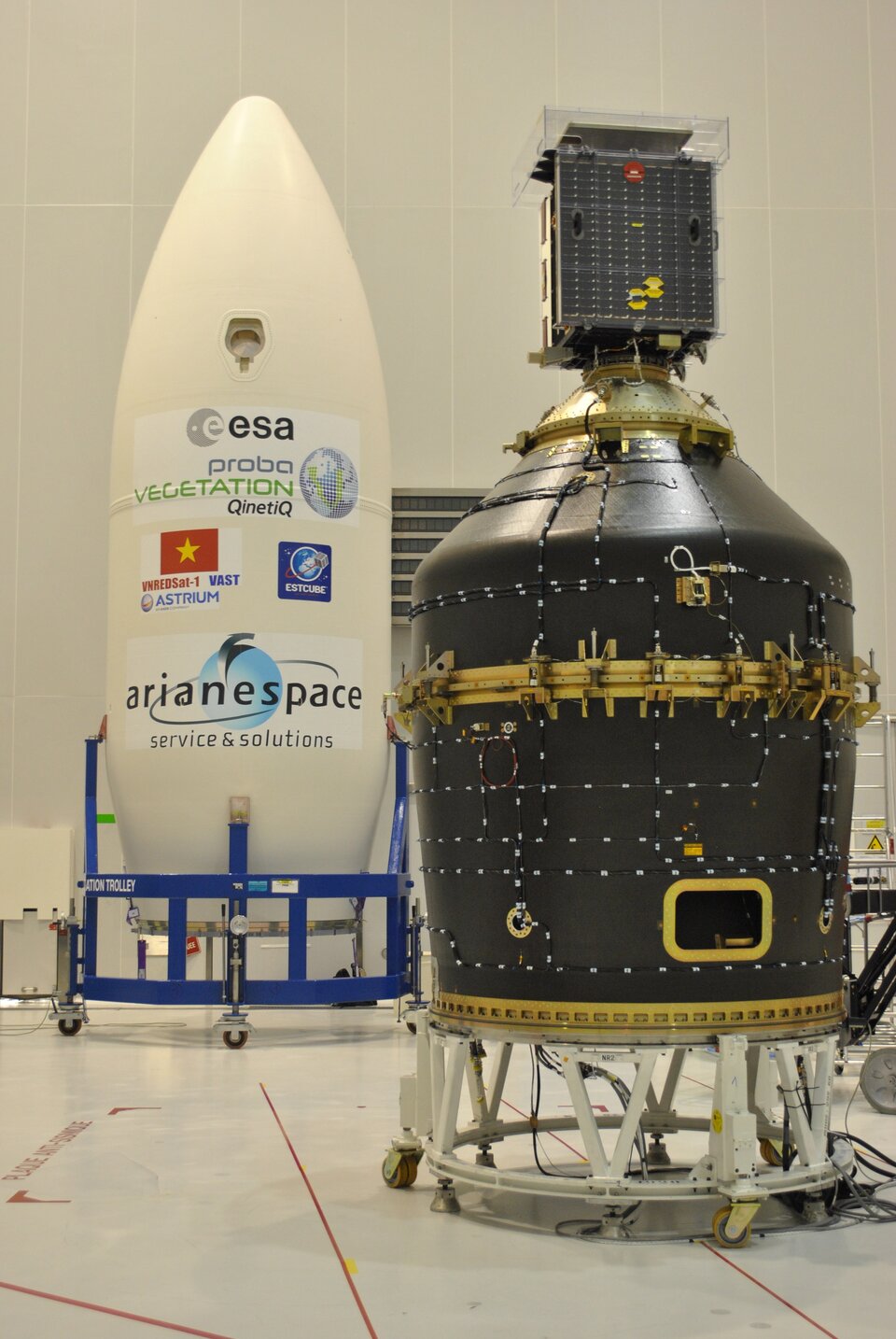
Proba-V was the first payload released by Vespa into a Sun-synchronous polar orbit at 820 km altitude and an inclination of 98.73°. At this point, the Vespa adapter separated and Vega then, through a series of five burns and coasts, moved into a second orbit at 668 km altitude and an inclination of 98.13° for the second deployment of the two remaining payloads.
A final burn deorbited the upper stage to ensure that it does not remain as a debris threat.
In addition to the Vespa adapter, this second Vega launcher also incorporated new flight software.
To receive telemetry during the early phase of the flight, a new ground station was built in the north of French Guiana.
This was the first Vega launch operated by Arianespace on behalf of ESA, although ESA was still responsible for the mission.


